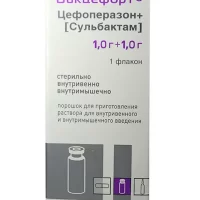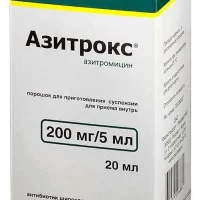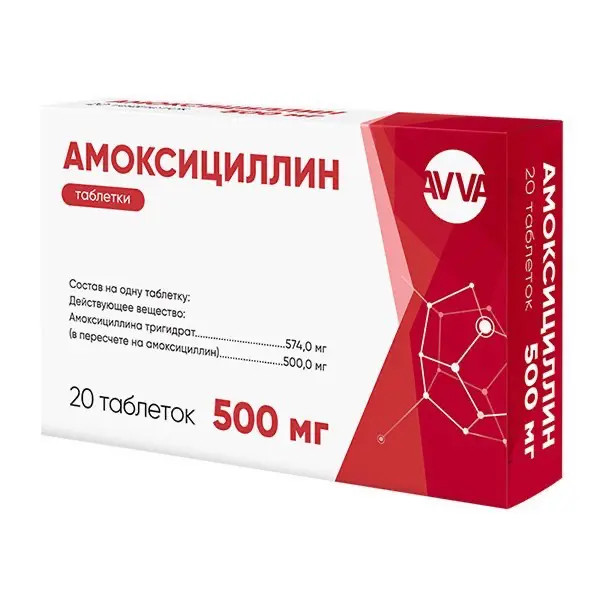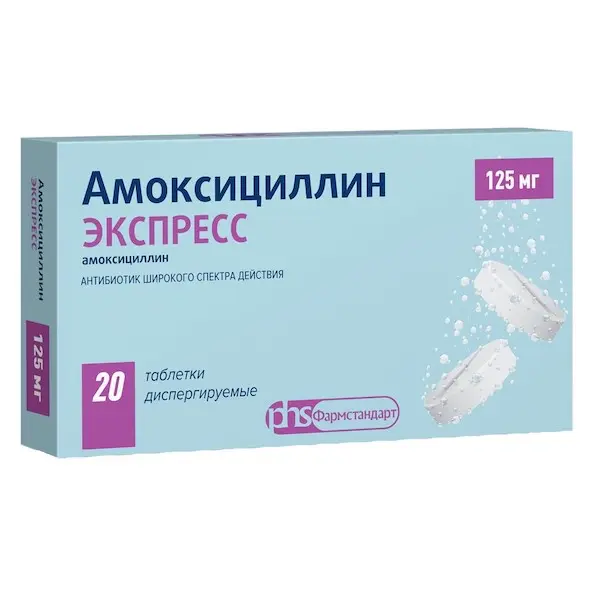Description
Azithromycin Pharmacodynamics
Azithromycin is a bacteriostatic broad-spectrum antibiotic of the macrolide-azalide group. It has a broad spectrum of antimicrobial action. Azithromycin mechanism of action is associated with inhibition of microbial cell protein synthesis. Binding to 50S-subunit of ribosome, it inhibits peptide translocase at the translation stage and inhibits protein synthesis, slowing down the growth and reproduction of bacteria. At high concentrations it has a bactericidal effect.
It has activity against a number of Gram-positive, Gram-negative, anaerobes, intracellular and other microorganisms.
Microorganisms may be initially resistant to the action of the antibiotic or may become resistant to it.
Microbial sensitivity scale for azithromycin
(Minimum inhibitory concentration (MIC), mg/L):
Microorganisms MIC, mg/L
Sensitive Resistant
Staphylococcus ≤ 1 > 2
Streptococcus
A, B, C, G ≤ 0.25 > 0.5
Streptococcus pneumoniae ≤ 0.25 > 0.5
Haemophilus influenzae ≤ 0.12 > 4
Moraxella catarrhalis ≤ 0.5 > 0.5
Neisseria gonorrhoeae ≤ 0.25 > 0.5
In most cases the susceptible microorganisms are
1. Gram-positive aerobes
Staphylococcus aureus methicillin-sensitive
Streptococcus pneumoniae penicillin-sensitive
Streptococcus pyogenes
2. Gram-negative aerobes
Haemophilus influenzae
Haemophilus parainfluenzae
Legionella pneumophila
Moraxella catarrhalis
Pasteurella multocida
Neisseria gonorrhoeae
Anaerobes
Clostridium perfringens
Fusobacterium spp.
Prevotella spp.
Porphyriomonas spp.
4. Other microorganisms
Chlamydia trachomatis
Chlamydia pneumoniae
Chlamydia psittaci
Mycoplasma pneumoniae
Mycoplasma hominis
Borrelia burgdorferi
Microorganisms capable of developing azithromycin resistance
Gram-positive aerobes
Streptococcus pneumoniae penicillin-resistant
Initially resistant microorganisms
Gram-positive aerobes
Enterococcus faecalis
Staphylococci (methicillin-resistant staphylococci with a very high frequency of acquired resistance to macrolides).
Gram-positive bacteria that are resistant to erythromycin.
Anaerobes
Bacteroides fragilis.
Indications
Infectious and inflammatory diseases caused by microorganisms sensitive to the drug:
-Infections of upper respiratory tract and ENT organs (pharyngitis/tonsillitis, sinusitis, otitis media);
– lower respiratory tract infections: acute bronchitis, exacerbation of chronic bronchitis, pneumonia, including those caused by atypical pathogens;
-Infections of the skin and soft tissues (moderately severe acne vulgaris, rye, impetigo, secondary infected dermatoses);
-initial stage of Lyme disease (borreliosis) – erythema migrans;
-infections of the urogenital tract caused by Chlamydia trachomatis (urethritis, cervicitis).
Contraindications
Hypersensitivity to azithromycin, erythromycin, other macrolides or ketolides or other drug components; severe hepatic impairment; simultaneous use with ergotamine and dihydroergotamine; children under 3 years of age (for 125 mg tablets), children under 12 years of age with body weight less than 45 kg (for 500 mg tablets).
Caution
Myasthenia; mild to moderate hepatic dysfunction; terminal renal failure with a GFR (glomerular filtration rate) less than 10 ml/min; in patients with proarrhythmogenic factors (especially in elderly patients): with congenital or acquired prolongation of the QT interval, in patients receiving therapy with antiarrhythmic drugs of classes IA (quinidine, procainamide), III (dofetilide, amiodarone and sotalol), cisapride, terfenadine, antipsychotic drugs (pimozide), antidepressants (citalopram), fluoroquinolones (moxifloxacin and levofloxacin), with electrolyte balance disorders, especially in case of hypokalemia or hypomagnesemia, with clinically significant bradycardia, cardiac arrhythmia or severe heart failure; concomitant use of digoxin, warfarin, cyclosporine.
Use in pregnancy and during breast-feeding
During pregnancy and breast-feeding it is used only if the expected benefits to a mother exceed the potential risk to a fetus and a child. If it is necessary to use the drug during the period of breast-feeding, it is recommended to suspend breast-feeding.
Dosage and administration
- Orally, without chewing, at least 1 hour before or 2 hours after meals, once a day.
Adults and children over 12 years of age with body mass over 45 kg (tablets Azithromycin 250 mg and 500 mg): - In infections of the upper and lower respiratory tract, ENT organs, skin and soft tissues: 1 tablet (500 mg) or 2 tablets (250 mg) 1 time per day for 3 days (course dose – 1.5 g).
In moderate acne vulgaris: 1 tablet (500 mg) or 2 tablets (250 mg) once a day for 3 days, then 1 tablet (500 mg) or 2 tablets (250 mg) once a week for 9 weeks (6.0 g course dose). - The first weekly tablet should be taken 7 days after the first daily tablet (8th day from the start of treatment), the next 8 weekly tablets at 7-day intervals.
In Lyme disease (initial stage of borreliosis)- erythema migrans – 1 time per day for 5 days: Day 1 – 1.0 g (2 tablets 500 mg), then from day 2 to day 5 – 1 tablet (500 mg) (course dose – 3 g). - In case of urogenital tract infections caused by Chlamydia trachomatis (urethritis, cervicitis): uncomplicated urethritis/cervicitis – 1 g (2 tablets of 500 mg) once.
Children aged 3 to 12 years with body weight less than 45 kg (Azithromycin 125 mg tablets): - In infections of upper and lower respiratory tract, ENT organs, skin and soft tissues – at the rate of 10 mg/kg of body weight once a day for 3 days (course dose of 30 mg/kg). For convenient dosing it is recommended to use Table 1.
Table 1. Dosage calculation of Azithromycin for children with body weight less than 45 kg. - Weight
Body weight Azithromycin dosage in tablets 125 mg
18-30 kg 2 tablets
(250 mg azithromycin)
31-44 kg 3 tablets
(375 mg azithromycin)
At least 45 kg Use doses recommended for adults - In pharyngitis/tonsillitis caused by Streptococcus pyogenes, administer at a dose of 20 mg/kg/day for 3 days (course dose of 60 mg/kg). The maximum daily dose is 500 mg.
In Lyme disease (initial stage of Borreliosis) – erythema migrans: 20 mg/kg 1 time per day on the 1st day, then at a rate of 10 mg/kg 1 time per day from the 2nd to 5th days.
In renal impairment: In patients with impaired renal function with a GFR of 10-80 ml/min, no dose adjustment is required.
In patients with liver dysfunction: no dose adjustment is required in patients with liver dysfunction of mild to moderate severity.
Elderly patients: No dose adjustment is required. Since elderly people may already have current proarrhythmogenic conditions, caution should be exercised when using Azithromycin due to a high risk of cardiac arrhythmias, including “pirouette”-type arrhythmias.





